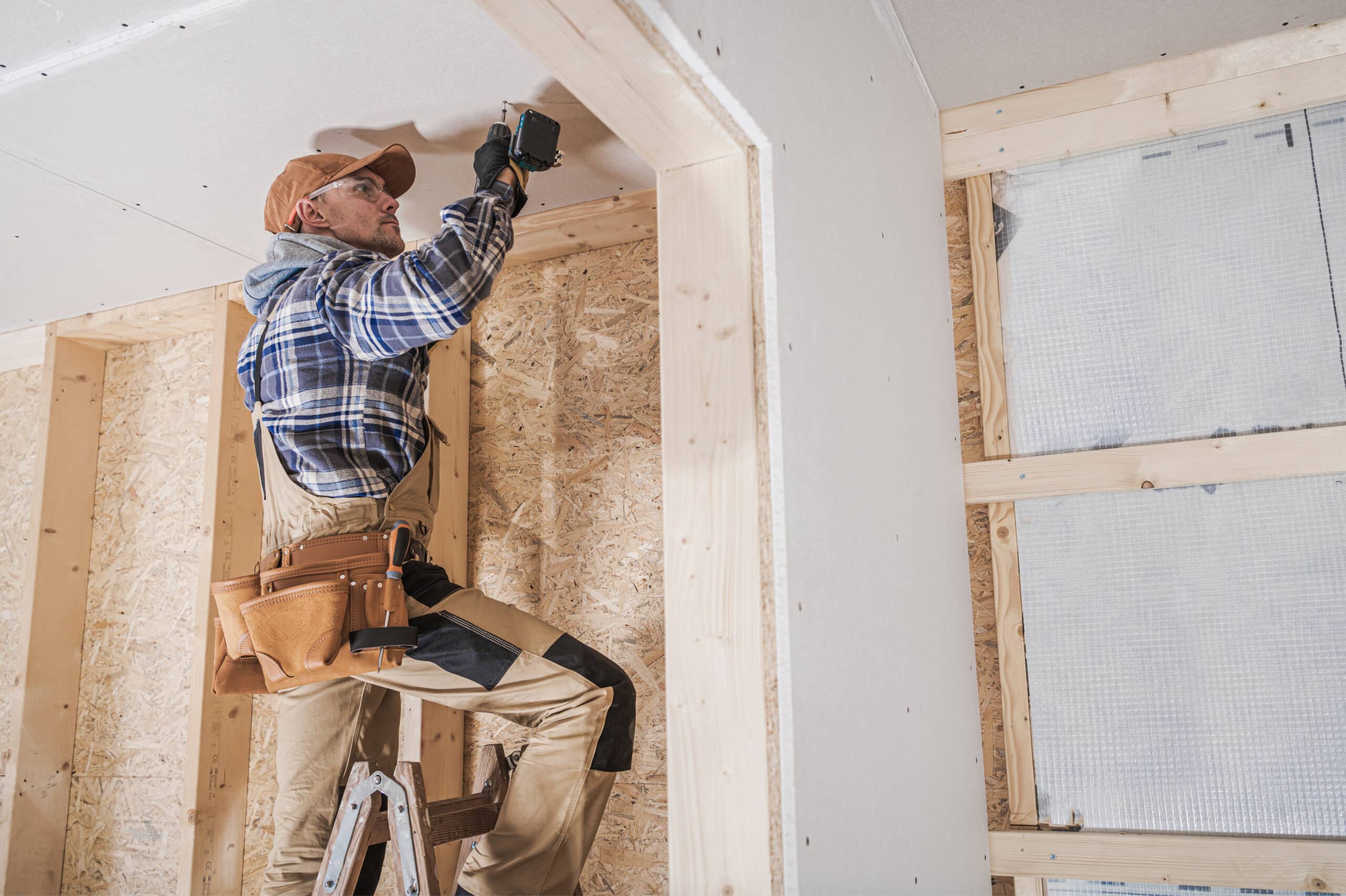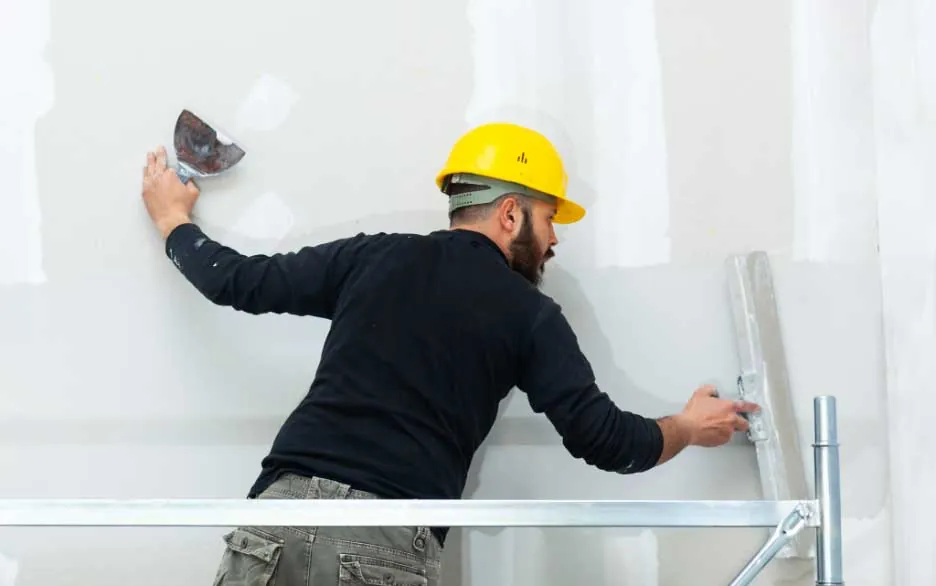Effective Drywall Repair Techniques to Restore Your Walls
Effective Drywall Repair Techniques to Restore Your Walls
Blog Article
Drywall Installation Facilitated: Tips for Perfect Outcomes
Drywall installation is often perceived as a challenging job, yet with the best strategy and knowledge, it can come to be a manageable venture. Understanding methods for reducing, hanging, and completing drywall can substantially impact the result.
Picking the Right Products
Picking the suitable products for drywall installation is vital to accomplishing a resilient and visually pleasing coating. sheetrock repair fort worth. The primary element, drywall sheets, commonly come in different densities, with 1/2-inch sheets being common for interior walls. For areas needing additional wetness resistance, such as washrooms or kitchens, take into consideration using green board or cement board, which are specifically created to hold up against humidity

Furthermore, selecting the best fasteners-- either screws or nails-- is essential for securing the drywall to the framing. Drywall screws are usually preferred for their holding power and lowered threat of standing out. Finally, think about the finishing touches such as primer and paint, which not only enhance the appearance yet likewise secure the drywall from wetness and wear.
Preparing the Installation Location
Before starting the drywall installation procedure, it is important to prepare the setup location completely. A tidy work area decreases the risk of damages to existing things and permits for reliable movement throughout installment.
Next, check the wall surfaces and ceiling for any type of flaws, such as cracks, holes, or mold and mildew. Address these issues in advance; spot any damages and enable enough time for repairs to dry. In addition, ensure that electric outlets, buttons, and pipes are properly positioned and accounted for, as this will affect drywall positioning.
Think about the ecological problems. A steady temperature and humidity level are vital for optimal adhesion and performance of the drywall materials. Utilize a dehumidifier or heating unit to produce suitable conditions. if necessary.
Trimming and Hanging Drywall
The trick to efficient drywall installation lies in the precise cutting and dangling of the panels. Begin by gauging the area precisely, taking into account any obstructions such as electric outlets or windows. Make use of a straight side and an utility knife to rack up the drywall along your measurements, after that break it along the racked up line for a clean break. For even more complex cuts, such as around outlets, a drywall saw can be utilized for accuracy.

Constantly function from the top down and left to right, ensuring that you keep a staggered pattern to improve security. Correctly hanging the drywall establishes the foundation for a smooth surface, ultimately causing superior results in your drywall task.
Taping and Mudding Methods
While correct cutting and dangling of drywall sets the stage, the following crucial step includes understanding taping and mudding techniques to make sure a smooth finish. Insulation is important for strengthening joints and protecting against cracks; it includes installing tape right into the used check that joint substance (mud) Start with a quality fiberglass or paper tape, applying the tape over the joint and pressing it right into the damp mud making use of a taping blade, ensuring no air bubbles remain.
When the tape remains in place, use a thin layer of joint compound over the tape, feathering the edges to create a smooth transition to the drywall surface. Enable this layer to dry entirely before sanding it lightly to eliminate flaws. Repeat this procedure, applying additional layers of mud as essential-- usually 2 to 3 layers-- while slowly broadening the application area with each layer to accomplish a seamless look.
After the last layer dries out, sand the surface area with a fine-grit sandpaper up until smooth. drywall installation. Keep in mind to wear a mask during sanding to stay clear of inhaling dust particles. Mastering these taping and mudding methods is vital for attaining a professional-quality surface in your drywall installment
Completing Touches for Excellence
Achieving a perfect drywall installation surpasses taping and mudding; it culminates in the finishing touches that raise the overall look. These last actions are important in making sure a professional-grade surface that enhances the aesthetic appeals of your area.
Begin by sanding the dried out joint compound to create a smooth surface. Utilize a fine-grit sandpaper and a fining sand block or pole sander for optimum control. Pay specific attention to site here edges and edges, as these locations tend to call for more thorough job. After sanding, wipe down the wall surfaces with a wet cloth to eliminate any kind of dirt fragments, making certain a tidy surface for paint.
Next, apply a primer particularly made for drywall. This action is important, as it aids secure the joint compound and gives click for more an uniform base for the topcoat. Once the primer dries, examine for any kind of flaws, and touch up as required.
Conclusion
In verdict, effective drywall installment hinges on the careful selection of products, detailed prep work of the installation location, and specific implementation of reducing and hanging methods. Mastery of taping and mudding processes is essential for achieving a smooth coating.
Drywall installation is typically perceived as an overwhelming task, yet with the best method and understanding, it can come to be a workable venture.Picking the ideal materials for drywall installation is vital to accomplishing a durable and cosmetically pleasing surface.Before starting the drywall setup process, it is necessary to prepare the installation location thoroughly. Mastering these taping and mudding strategies is important for accomplishing a professional-quality coating in your drywall installment.
In verdict, effective drywall setup hinges on the mindful selection of products, thorough prep work of the installation location, and specific implementation of cutting and hanging strategies.
Report this page